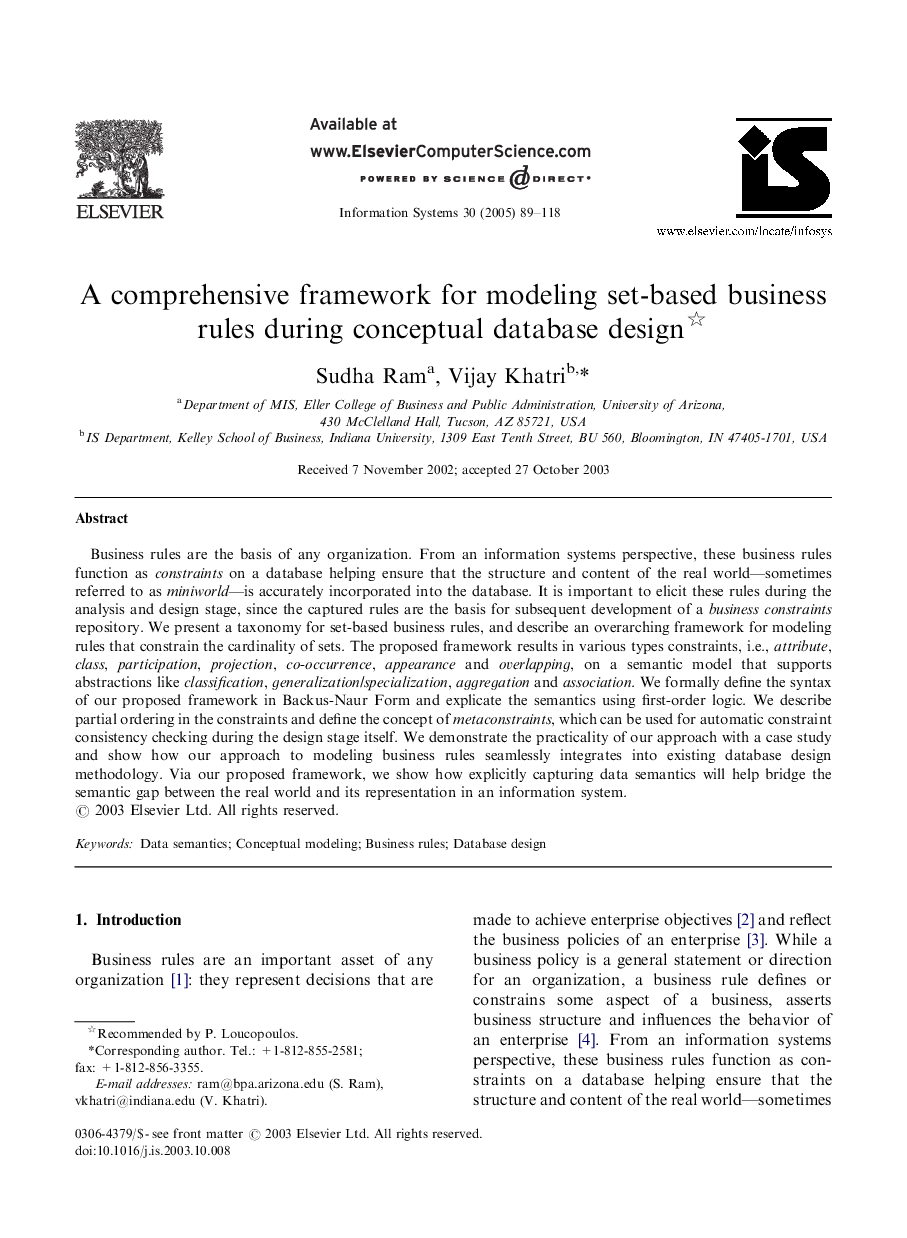| Article ID | Journal | Published Year | Pages | File Type |
|---|---|---|---|---|
| 10325407 | Information Systems | 2005 | 30 Pages |
Abstract
Business rules are the basis of any organization. From an information systems perspective, these business rules function as constraints on a database helping ensure that the structure and content of the real world-sometimes referred to as miniworld-is accurately incorporated into the database. It is important to elicit these rules during the analysis and design stage, since the captured rules are the basis for subsequent development of a business constraints repository. We present a taxonomy for set-based business rules, and describe an overarching framework for modeling rules that constrain the cardinality of sets. The proposed framework results in various types constraints, i.e., attribute, class, participation, projection, co-occurrence, appearance and overlapping, on a semantic model that supports abstractions like classification, generalization/specialization, aggregation and association. We formally define the syntax of our proposed framework in Backus-Naur Form and explicate the semantics using first-order logic. We describe partial ordering in the constraints and define the concept of metaconstraints, which can be used for automatic constraint consistency checking during the design stage itself. We demonstrate the practicality of our approach with a case study and show how our approach to modeling business rules seamlessly integrates into existing database design methodology. Via our proposed framework, we show how explicitly capturing data semantics will help bridge the semantic gap between the real world and its representation in an information system.
Related Topics
Physical Sciences and Engineering
Computer Science
Artificial Intelligence
Authors
Sudha Ram, Vijay Khatri,
